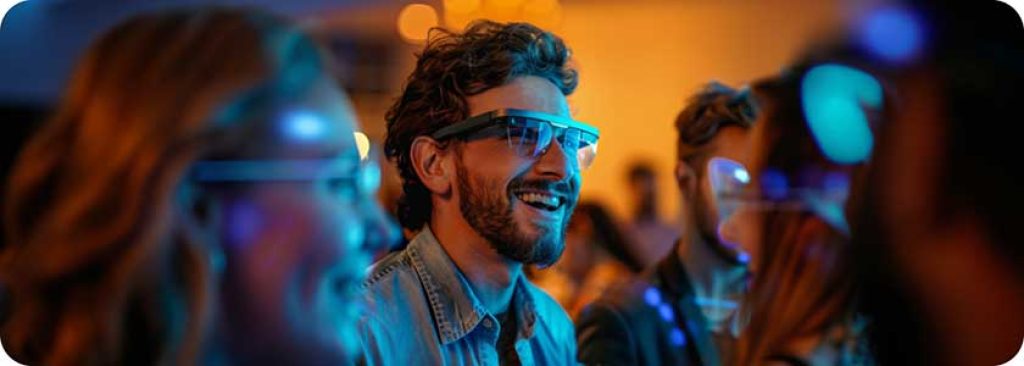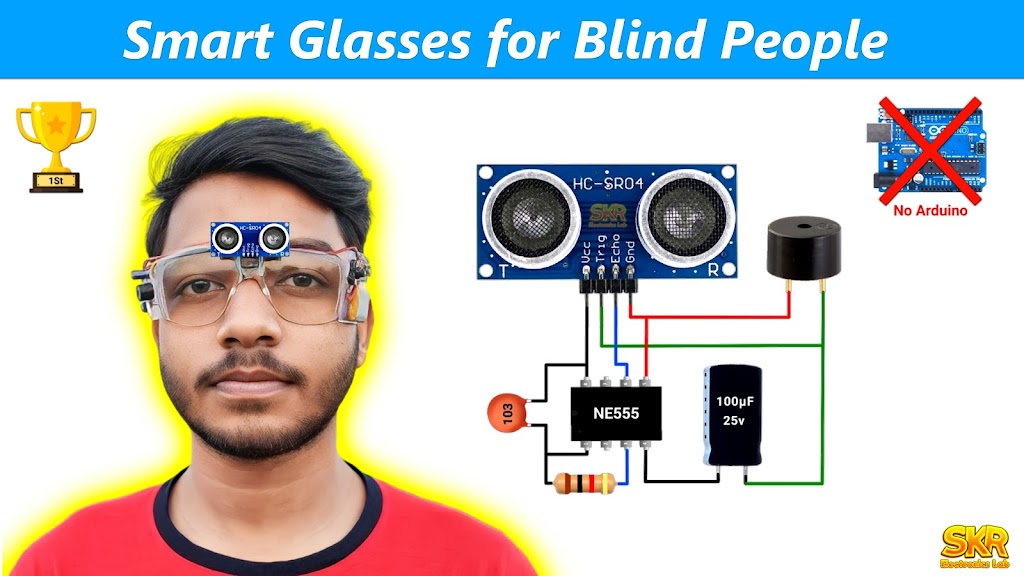Discover Advanced Assistive Devices for People With Visual Disabilities
The landscape of assistive modern technology for people with visual problems is evolving rapidly, providing a series of innovative tools that boost freedom and involvement (Braille displays and notetakers). From clever glasses that flawlessly combine aesthetic input with acoustic support to innovative navigating applications that redefine spatial awareness, these tools are improving opportunities. The most current developments in Braille technology and voice-activated systems significantly add to availability. The implications of these growths prolong far beyond simple performance; they challenge conventional understandings of handicap and self-reliance. What might this imply for the future of inclusion and support?
Smart Glasses Innovations
Smart glasses represent a significant development in assistive technology for people with aesthetic disabilities. Geared up with sensing units and cams, wise glasses can capture real-time aesthetic details, which is then processed and shared to the individual through sound responses or haptic feelings.
Furthermore, advancements in expert system have better improved the capabilities of clever glasses. Artificial intelligence formulas can recognize faces, read text, and recognize items, making them indispensable tools for day-to-day tasks. Individuals can receive acoustic cues that give context about their setting, promoting freedom and confidence.
In addition, the ergonomic style and light-weight nature of many smart glasses make them ideal for prolonged usage, ensuring convenience while boosting functionality. As these tools remain to progress, they hold the potential to transform the means individuals with visual problems experience their daily lives, connecting the gap between access and technology. The continuous study and development in this field pledge to expand the possibilities for wise glasses, making them an important element of modern-day assistive devices.
Navigating Apps and Equipment
Numerous navigation apps and devices have actually arised as important resources for individuals with aesthetic problems, significantly improving their capability to go across strange environments. These innovations take advantage of general practitioner capability, audio signs, and real-time information to provide customers with exact navigating help.
One noticeable instance is the Aira application, which attaches customers to experienced representatives that can give aesthetic summaries of surroundings and navigation guidance through a live video clip feed. This solution improves the individual's spatial understanding and confidence while navigating. Another noteworthy tool is Seeing Eye GPS, which provides voice-guided navigation and points of interest, making it possible for customers to gain access to essential details regarding their environments.

As innovation proceeds to advancement, the development of a lot more sophisticated navigating tools assures to additional encourage individuals with aesthetic impairments, facilitating smooth mobility and combination right into diverse settings. Such developments are important in promoting a much more comprehensive society.
Braille Modern Technology Advancements
In the last few years, improvements in Braille modern technology have dramatically transformed just how individuals with visual impairments access details and engage with the globe around them. The advancement of mobile Braille screens has transformed reading by permitting customers to attach wirelessly to tablets, smart devices, and computer systems. These tools convert message into Braille in real-time, making it possible for seamless interaction with electronic content.
In addition, innovative Braille printers have arised, improving the production of responsive products. Modern embossers are quicker and much more reliable, enabling for the rapid development of Braille files and instructional materials. This performance decreases the moment and cost linked with producing Braille sources, making them more obtainable to organizations and schools.
In addition, the integration of Braille with various other technologies, such as expert system and maker understanding, has opened up brand-new avenues for customized understanding experiences. Voice recognition and synthesis innovations can enhance Braille, providing an inclusive technique to details dissemination.
As the demand for inclusive education and office environments grows, these technological innovations play an essential function in equipping people with aesthetic problems, guaranteeing they have equivalent accessibility to info and opportunities in different facets of life.
Wearable Devices for Independence
A growing array of wearable devices is enhancing independence for individuals with visual impairments, offering innovative services that improve navigation and daily living. Braille displays and notetakers. These tools make use of innovative modern technologies to give real-time comments and support, promoting freedom in numerous settings

Wearable innovation additionally consists of smartwatches that can be programmed with ease of access features, enabling individuals to obtain alerts, track their locations, or also call for help with the touch of a switch. Some gadgets integrate man-made intelligence to evaluate the environment, offering sound descriptions of close-by items or individuals.
Voice-Activated Assistive Solutions
Leveraging voice-activated assistive solutions has actually transformed the landscape of assistance for people with aesthetic disabilities, providing hands-free communication and accessibility to a range of jobs. These technologies make use of natural language processing and expert system to allow customers to carry out day-to-day activities with easy voice commands.

Additionally, recent improvements in voice acknowledgment accuracy have enhanced the user experience significantly, accommodating diverse accents and speech patterns. This inclusivity ensures that more people can profit from these technologies, promoting a greater sense of freedom.
Final Thought
Finally, the growth of advanced assistive gadgets significantly improves the self-reliance and high quality of life for people with visual problems. Developments such as clever glasses, navigating applications, Braille technology, wearable tools, and voice-activated options collectively cultivate an even more inclusive environment. These modern technologies equip individuals to browse their surroundings with confidence and engage more totally with the globe, inevitably promoting higher availability and level playing fields for individuals facing aesthetic difficulties.
The landscape of assistive right here technology for people with visual disabilities is evolving quickly, presenting a variety of innovative gadgets that boost autonomy and interaction.Smart glasses stand for a considerable innovation in assistive innovation for people with visual disabilities. As these devices proceed to develop, they hold the potential to transform the way people with visual problems experience their daily lives, linking the void between access and innovation.In current years, developments in Braille innovation have actually considerably transformed exactly how people with aesthetic impairments gain access to info and useful site involve with the globe around them. These modern technologies empower individuals to navigate their surroundings with confidence and engage more completely with the globe, inevitably advertising better accessibility and equal chances for people encountering visual challenges.